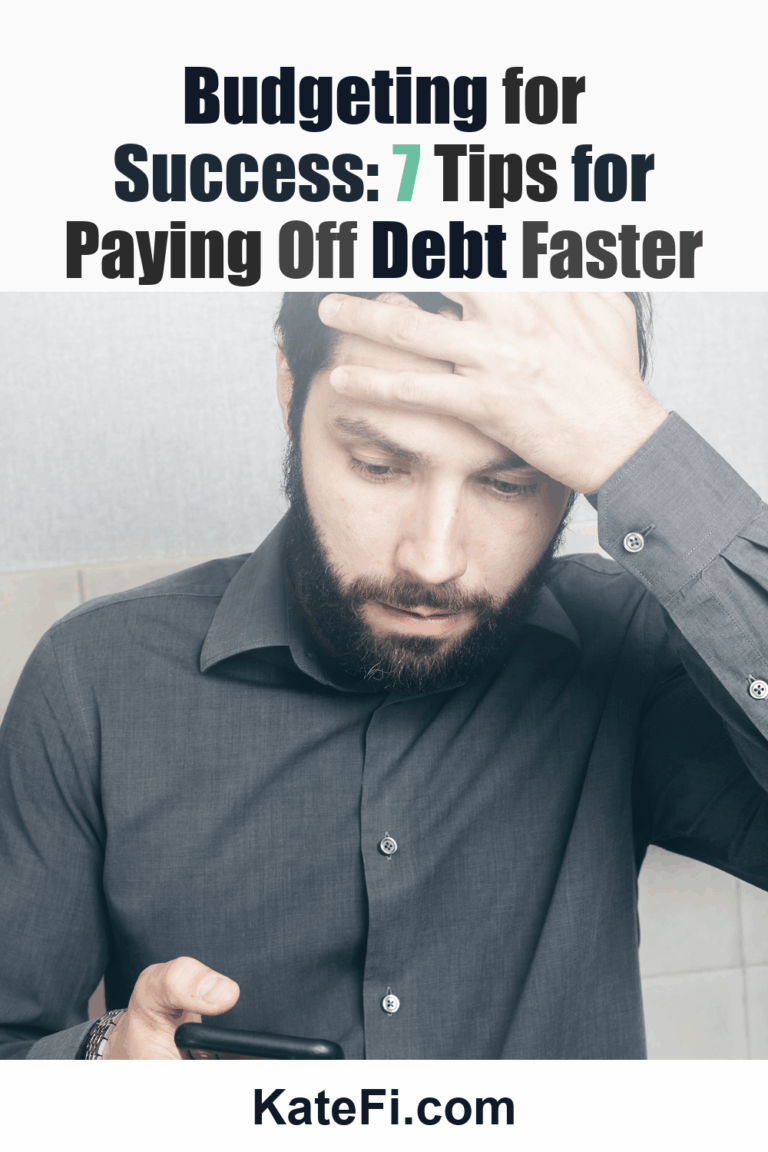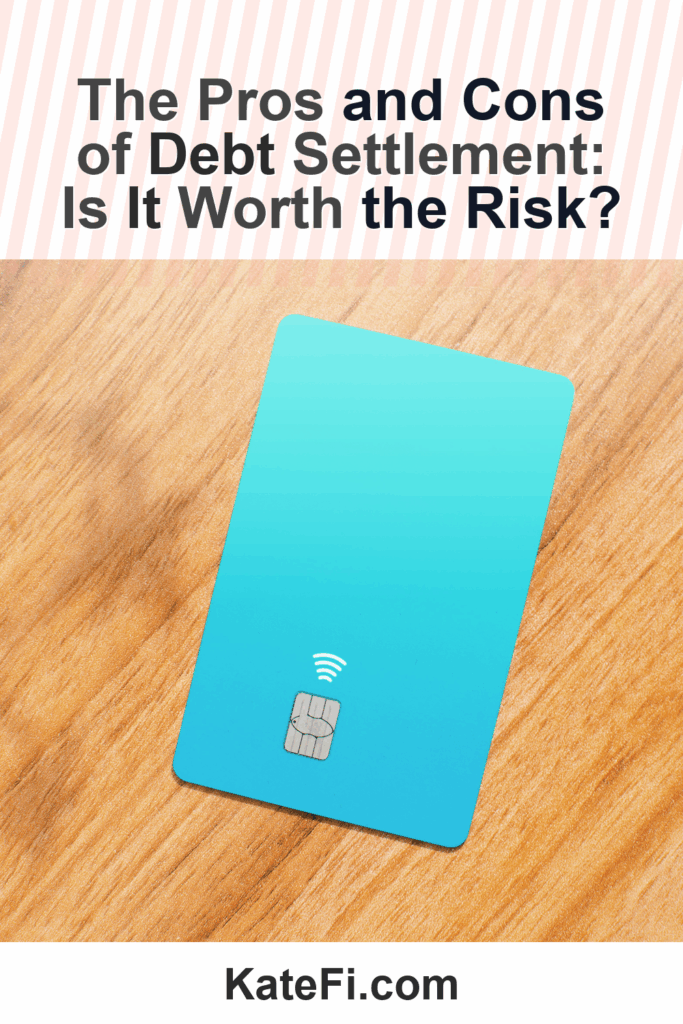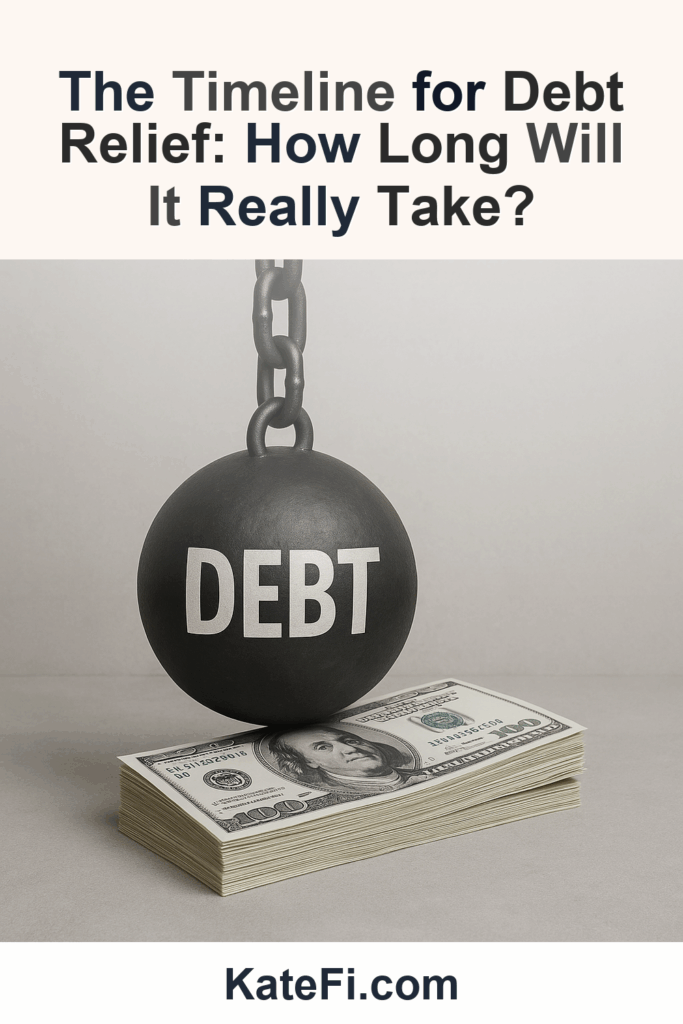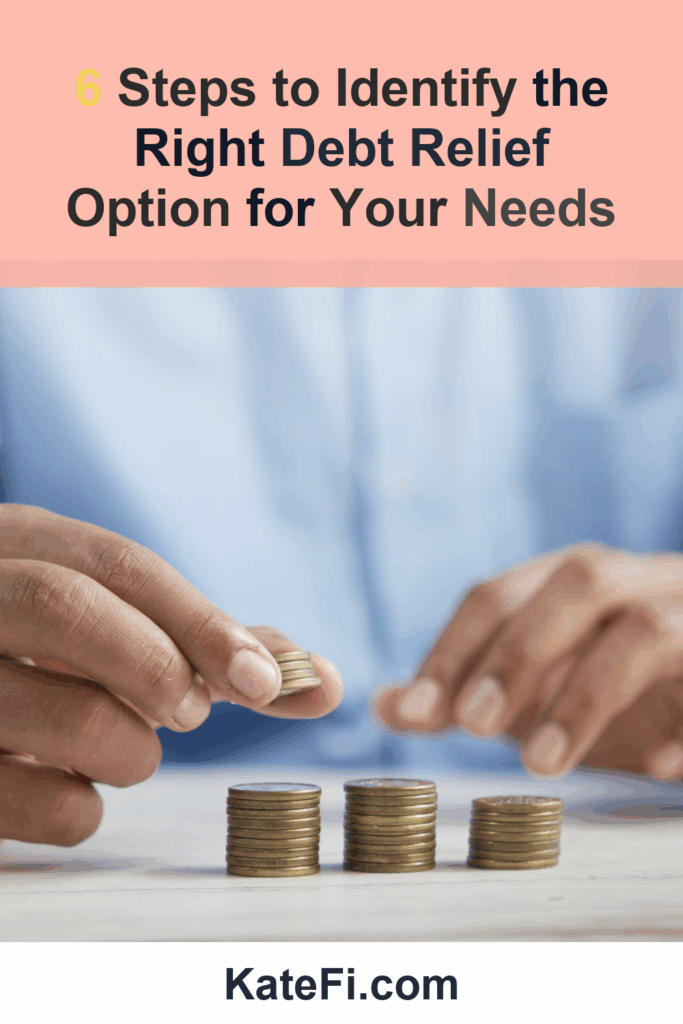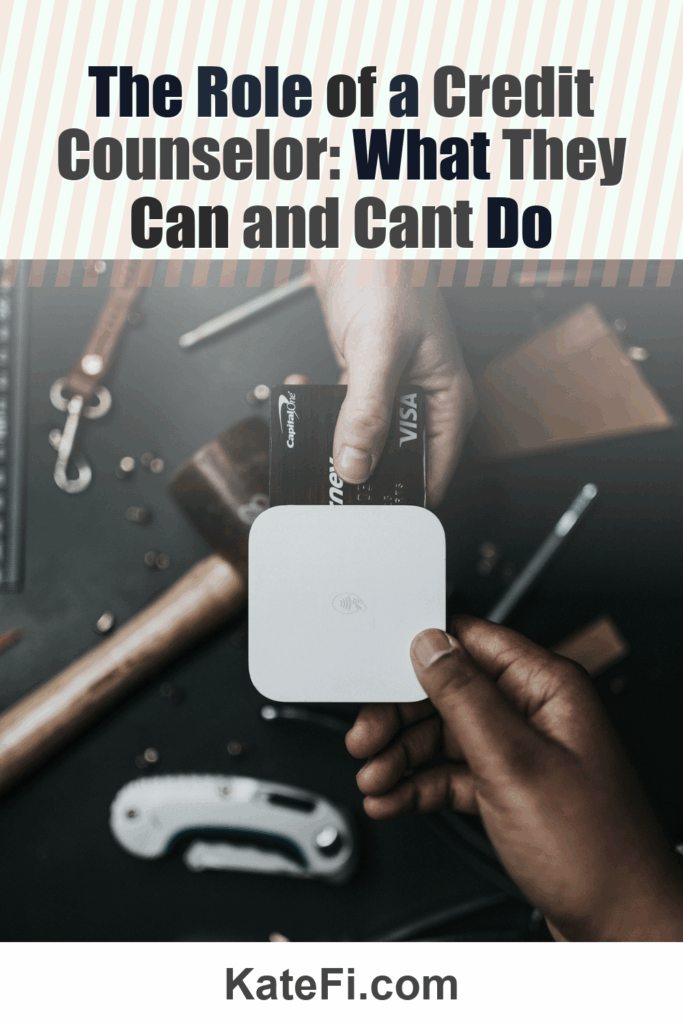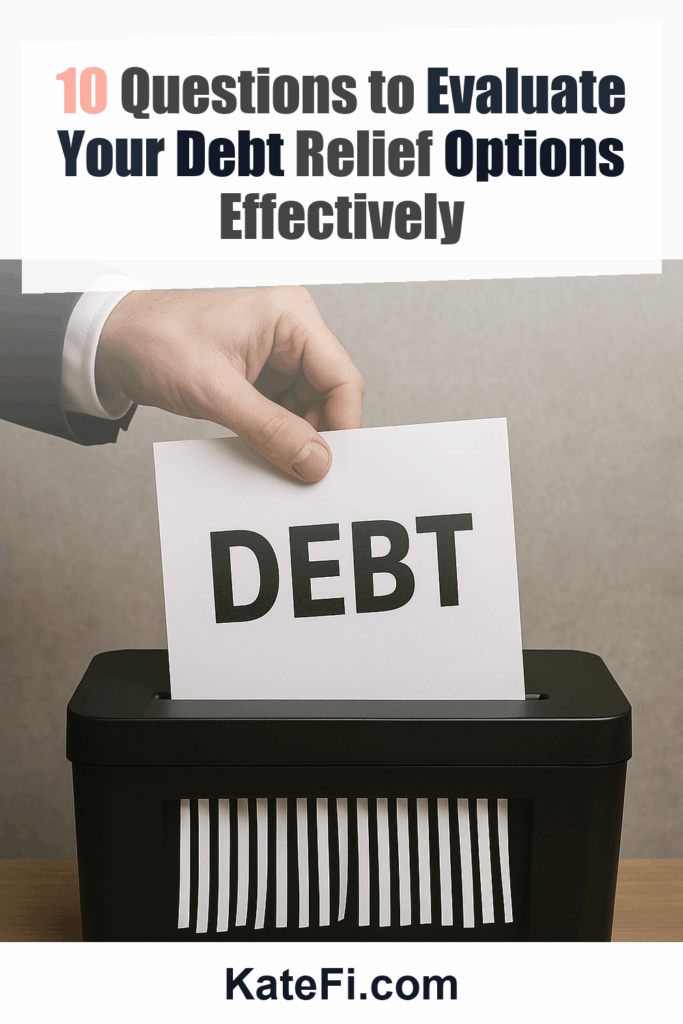Love our content? Show your support by following us — pretty please!🥺
FOLLOW ON PINTEREST
Hi! I’m Kate, the face behind KateFi.com—a blog all about making life easier and more affordable.
👉 Start Your Free Debt Relief Review
Not available in IL, KS, OR, TN, UT, WV.
Budgeting for Success: 7 Tips for Paying Off Debt Faster
Debt can often feel like a heavy weight, dragging you down and clouding your financial future. But paying off debt doesn’t have to be an insurmountable challenge. With the right approach, you can tackle your debt head-on and pave the way for a brighter financial future. In this post, we’ll explore budgeting strategies, share crucial tips for settling or consolidating your debt, and guide you toward making informed choices for your financial health.
Understanding Your Debt: The First Step Toward Relief
Before diving into specific strategies, it’s essential to understand what type of debt you’re dealing with. Are they credit cards, medical bills, or personal loans? Each type may require a different approach. Additionally, consider whether you’re struggling with unsecured debt, which is typically easier to negotiate, or secured debt, like mortgages, where you risk losing your asset if you fall behind.
The foundation of effective debt management lies in knowing your total balance, interest rates, and minimum payments. Start by gathering all your bills and creating a comprehensive list. Once you have this, you can begin crafting a plan to tackle each one.
1. Create a Detailed Budget
Creating a realistic budget is essential for financial stability. A budget helps you track your income and expenses, allowing you to see where you can cut costs and free up money for debt repayment.
- Start by documenting your income: List all sources of income, including salaries, freelance work, and any side gigs.
- Next, categorize your expenses: Separate them into fixed expenses (like rent or mortgage) and variable expenses (like groceries or entertainment). This will help you identify where you can potentially cut back.
- Prioritize debt payments: Allocate a portion of your income specifically to debt repayment, ensuring you’re consistently making progress.
To further streamline this process, consider utilizing budgeting apps that can help track your spending and automate savings.
2. Prioritize High-Interest Debt
When creating your budget, one effective strategy is to focus on paying off high-interest debt first. This is often referred to as the avalanche method. By targeting debts with the highest interest rates, you reduce the total interest you’ll pay over time, which ultimately speeds up your debt payoff journey.
However, if the thought of tackling a large balance feels overwhelming, consider the snowball method. This approach focuses on paying off smaller debts first, which can provide quick wins and motivate you to continue.
3. Explore Debt Relief Options
Debt relief options can significantly ease your burden and offer pathways to financial freedom. The three most common methods are debt settlement, consolidation, and Debt Management Plans (DMPs).
#### Debt Settlement
Involves negotiating with creditors to settle your debt for less than you owe. This can be an excellent option for those struggling with significant financial distress and seeking a fast resolution. However, it’s essential to consider that debt settlement can impact your credit score, and creditors may refuse to negotiate.
#### Debt Consolidation
This strategy involves taking out a single loan to pay off multiple debts, thereby reducing the number of creditors you deal with. Ideally, this new loan has a lower interest rate, which can save you money in the long run. Debt consolidation is suitable for individuals with good credit who can qualify for favorable rates.
#### Debt Management Plans (DMPs)
DMPs are established with the help of a credit counseling agency. Under a DMP, you make a single monthly payment to the agency, which then pays your creditors. This approach can help simplify your repayment process and may also reduce interest rates and fees. DMPs work best for individuals with consistent income who want structured assistance.
Quick Comparison: Settlement vs. Consolidation vs. DMP
| Method | Best For | Pros | Cons |
|---|---|---|---|
| Debt Settlement | Severe financial distress | Can reduce total debt | Affects credit score; tax implications |
| Debt Consolidation | Good credit and multiple debts | Simplifies payments; can lower interest | Risk of accumulating more debt |
| DMP | Structured support needed | Lower rates; single payment | Requires commitment; potential fees |
4. Build an Emergency Buffer
While it may seem counterintuitive to save while paying off debt, establishing a small emergency fund is crucial. Life is unpredictable, and having a buffer can prevent you from accumulating more debt due to unexpected expenses. Aim to save at least $500 to $1,000 as a start.
Once you’ve created a small buffer, you can refocus on your debt repayment strategy. This approach provides peace of mind, knowing you have some financial cushion in case of emergencies.
5. Increase Your Income
Finding ways to boost your income can greatly accelerate your debt repayment. This can involve taking on a side job, freelancing, or selling unused items. Consider these options:
- Freelancing: Leverage your skills by offering services online through platforms like Upwork or Fiverr.
- Part-time jobs: Explore local opportunities that fit your schedule, like retail or food service.
- Selling unused items: Declutter your home and turn items you no longer need into cash through online marketplaces.
All additional income should be directed toward your debt repayment plan, which can significantly shorten the time it takes to become debt-free.
6. Monitor Your Credit
Regularly checking your credit report can help you stay on top of your financial health and identify any discrepancies. Understanding how your debt impacts your credit score is also vital.
Here’s a quick checklist to get you started:
- Check your credit report: Look for errors and dispute any inaccuracies.
- Understand your credit utilization ratio: Aim to keep it below 30% of your available credit.
- Be mindful of late payments: Make payments on time to avoid negative impacts on your score.
7. Seek Professional Help
If you feel overwhelmed by your debt, don’t hesitate to reach out for professional guidance. Consider scheduling a free consultation with a debt relief expert at KateFi.com. They can help you explore your options, assess your financial situation, and provide tailored advice on the best route for your circumstances.
✅ See If You Qualify for Debt Relief
Conclusion
Paying off debt is a journey that requires patience, discipline, and a solid strategy. By implementing these seven tips into your budgeting practices, you’ll be better equipped to tackle your debt effectively and efficiently. Whether you choose to settle, consolidate, or engage in a DMP, the key is to stay informed, motivated, and proactive in managing your financial future.
Remember, if you feel unsure about which path to take, getting a free consultation from a professional can provide the clarity and guidance you need. Take control of your finances today, and start paving your way to a debt-free life!
✅ See If You Qualify for Debt Relief
Important: This content is for education only—not legal, tax, or financial advice. Results and eligible programs vary by situation and state. Fees apply if you enroll and complete a program. Debt relief can affect credit; missed payments may lead to collections/lawsuits. Not available in IL, KS, OR, TN, UT, WV.
Understand pros/cons of settlement vs consolidation vs DMP for your exact mix of debts.
Not available in IL, KS, OR, TN, UT, WV.
Lower Your Unsecured Debt
If you have $5,000+ in credit card or personal loan debt, a free consult can review options like settlement or hardship plans.
- One-on-one call to review your debts and goals
- See potential monthly payment reductions
- No obligation to enroll
Not available in IL, KS, OR, TN, UT, WV.
What You’ll Learn on the Call
- Estimated timeline and monthly payment range
- How credit may be affected in the short term
- What documents to gather to move faster
Not available in IL, KS, OR, TN, UT, WV.

